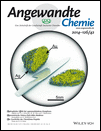Racemic and Quasi-Racemic X-ray Structures of Cyclic Disulfide-Rich Peptide Drug Scaffolds†
We thank the beam-line staff at the Australian Synchrotron and the University of Queensland Remote Operation Crystallisation and X-ray (UQ ROCX) facility for their support. We thank Olivier Cheneval and Phillip Walsh for help with peptide synthesis. This work was supported by a grant from the Australian Research Council (LP110200213). C.K.W. was supported by a National Health and Medical Research Council Early Career Research Fellowship (546578). D.J.C. is a National Health and Medical Research Council Professorial Fellow (APP1026501).
Abstract
Cyclic disulfide-rich peptides have exceptional stability and are promising frameworks for drug design. We were interested in obtaining X-ray structures of these peptides to assist in drug design applications, but disulfide-rich peptides can be notoriously difficult to crystallize. To overcome this limitation, we chemically synthesized the L- and D-forms of three prototypic cyclic disulfide-rich peptides: SFTI-1 (14-mer with one disulfide bond), cVc1.1 (22-mer with two disulfide bonds), and kB1 (29-mer with three disulfide bonds) for racemic crystallization studies. Facile crystal formation occurred from a racemic mixture of each peptide, giving structures solved at resolutions from 1.25 Å to 1.9 Å. Additionally, we obtained the quasi-racemic structures of two mutants of kB1, [G6A]kB1, and [V25A]kB1, which were solved at a resolution of 1.25 Å and 2.3 Å, respectively. The racemic crystallography approach appears to have broad utility in the structural biology of cyclic peptides.




